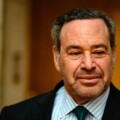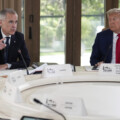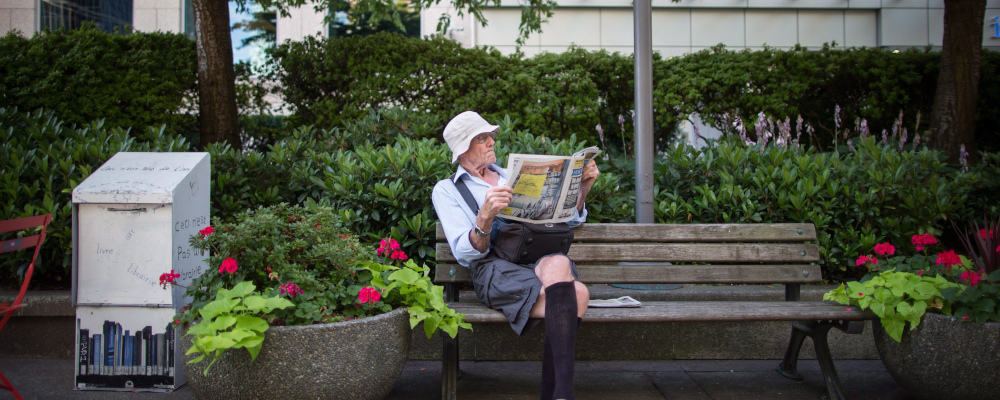The news media in Canada is in crisis. Policy responses to date are failing to solve for the information that citizens need to make informed decisions about important issues and debates. The Future of News series brings together leading practitioners, scholars, and thinkers to imagine new business models, policy responses, and journalistic content that can support a dynamic future for news in Canada.
Next Tuesday marks the fifth anniversary of the Trudeau government’s fourth Fall Economic Statement, which set out, among other initiatives, nearly $600 million in tax incentives and other subsidies for Canadian news outlets. With the exception of the Canadian Broadcasting Corporation’s annual subsidy, this five-year infusion represented one of the most significant allocations of public resources to Canadian journalism in the country’s history.
By coincidence, Tuesday will also mark the release of the Trudeau government’s tenth Fall Economic Statement in the face of mounting calls to expand the spending measures announced five years ago.
It’s been an eventful half-decade in terms of industry developments and government policymaking. The legacy media has experienced a significant contraction including a 14 percent reduction in the number of working journalists between 2016 and 2021 alone. These job losses have been partly offset by the rise of start-up outlets like The Hub, but there’s little doubt that the overall industry is smaller and faces diminished capacity relative to 2018.
Government policy has also evolved over this period including the enactment of the controversial Online News Act, which sought to mandate payments from Meta and Google to Canadian news outlets and has instead chased the former out of the market and is reportedly at serious risk of doing the same with the latter.
The net effect of these various developments has left the industry in a highly uncertain position. The legacy media still faces serious structural challenges. The start-up media has lost access to key sources of its growth. It represents quite a backdrop for Tuesday’s Fall Economic Statement.
“We’re confident that this process will work. The market will, by and large, sort itself out.
We’re not really interested however in speculating about the Fall Economic Statement or relitigating the case for or against the Online News Act. Our aim is to look forward. It’s to reset the public policy debate about the future of news rooted in a clear understanding of the nature and scale of the problem and to ultimately set out practical policy recommendations that support the transition to a sustainable news media sector in Canada.
That’s why we are proud to launch a new series at The Hub that we’re calling The Future of News. Over the next several months, we’ll publish a steady stream of opinion commentary, long-form reporting, and podcast episodes that involve a diverse group of practitioners, scholars, and thinkers from Canada and around the world focused on a set of key questions: what is the problem to be solved in the news media, what are the relative roles of the market and government to solve it, and what is the best mix of public policies to ultimately solve it?
Contributors to The Future of News series will be free to interpret these questions based on their own experiences and viewpoints. We’ll seek to bring a plurality of perspectives to bear on the subject—including legacy media voices and voices from the upstart world, those who support a more interventionist response and those who are more inclined to defer to market forces, and even exponents and opponents of the CBC alike.
Having co-founded and now led a start-up news organization for more than two-and-a-half years, we’ve come to some of our own conclusions about these questions. While we don’t seek to influence the analysis and commentary from the series’ contributors, we thought that, as we kick off the series, we owe The Hub’s readers an explanation of how we’ve come to think about these issues.
Our starting point is that news and information are crucial inputs into Canada’s civic and democratic life. We have a collective interest in the quantity and quality of news content in our society in a way that’s different than most market-provided goods or services. There isn’t a public interest in how many luxury handbags the economy produces. These are substitutable goods that may reflect individual preferences but cannot make the claim of a public good. News and information—particularly in a democracy—are different. It’s a key means by which we hold democratic governments accountable and exercise our rights and responsibilities as democratic citizens.
The news media sector is going through a period of significant disruption primarily because the prevailing business model, which relied heavily on advertising revenues to sustain its operations, has been superseded by broader market developments and evolving consumer preferences. This isn’t a classic “market failure” in the sense that the market hasn’t malfunctioned per se. Nobody forced the sector to become overdependent on a single revenue source which made it highly vulnerable to market changes. That was the result of industry choices that in hindsight were narrow and short-sighted. But it still doesn’t change that the consequences have been significant or shouldn’t be a cause for concern among policymakers or the Canadian public as a whole.
Yet even then there’s a tendency to overfocus on the destructive part of the process of “creative destruction” and to neglect the creative part. This risks missing a lot of exciting experimentation and innovation that’s currently occurring within news outlets like The Hub that will eventually be responsible for pulling the industry out of its present doldrums.
There are various industry-led efforts underway to figure out how to deliver high-quality news and information in the new market environment. They range from innovations within legacy media brands to new start-ups with business models that include subscription-driven financing, single proprietors, venture capital, and even charitable funding.
It’s a process of trial and error. There will invariably be stops and starts. Not all will ultimately be successful—in fact, most will not. But it’s a case of markets doing precisely what markets do, which is to enable a two-way conversation between entrepreneurs and consumers to determine the types of business models that can sustain themselves according to market terms.
We recognize that this may be messy and difficult. Well-regarded companies and quality journalists will face dislocation. It’s even quite possible that the industry is rationalized such that its footprint is permanently smaller. It’s also likely that it’s re-organized along more decentralized lines than we’ve experienced over the past several decades. There will probably be fewer large, dominant players with convergent business models. Instead, the new industry equilibrium will probably involve a greater mix of for-profit and non-profit business models, comprehensive and niche content models, and international, national, and local scopes of coverage that aggregate up to meet the needs of consumers. But we’re confident that this process will work. The market will, by and large, sort itself out.
This perspective distinguishes us from the alarmists who believe that the market has fundamentally malfunctioned in such a way that necessitates a large-scale policy intervention that extends across the entire news media sector. Just because the industry is going through a process of change doesn’t mean that Ottawa ought to turn every private news outlet into a mini-CBC that’s shielded from market forces. There’s nothing written in stone by the hand of God that the National Post, Toronto Star, or even the CBC must exist in perpetuity. It’s certainly not the job of public policy to guarantee that they do.
“The short-term challenges facing journalism are ones that entrepreneurs and innovators are actively working to solve.”
That said, we’d similarly distinguish ourselves from those who believe that markets alone can solve the challenges in news media—particularly in the short term. If one starts from the premise that we have a collective interest in the quantity and quality of news and information in our society, then there may be a role for public policy to help smooth the transition from the current bout of market disruption to a sustainable news media sector however it reconfigures itself.
We believe that there’s probably a targeted role for public policy to help during this transitory period—with a particular focus on areas that may be underserved by the market including local news, the North, and Indigenous communities. These arguably represent genuine market failures for which there may even prove to be an ongoing role for public policy to support the production and distribution of news and information.
That brings us back to the key questions that we set out earlier. If we were to answer them directly, we’d do so as follows:
- What is the problem to be solved in the news media? The problem is far narrower than is generally assumed. There may be a role for targeted policy interventions in certain communities or parts of the country to address genuine market failures. But there isn’t a large-scale market failure holding back the industry. There’s a market correction taking place and the main role for public policy is to enable it to play itself out.
- What are the relative roles of the market and government to solve it? Most of the challenges facing the sector will eventually be solved by market forces. The solution may take longer than people might like. It may even produce outcomes that they disagree with. But it’s a mistake for policymakers to short-circuit this process by intervening in favour of certain firms or particular parts of the industry. The role of public policy should be neutral and largely deferential to the market’s iterative process at this stage.
- What is the best mix of public policies to ultimately solve it? To the extent that there may be a role for public policy here, as we’ve set out in previous commentary, we believe that any such interventions should be implemented by government directly rather than outsourced to others and take the form of policy measures that follow market signals rather than direct them. One such example could be to establish journalism as a charitable activity under the Income Tax Act and subject it to the same tax benefits as political donations given that both are, in our view, fundamental to the functioning of our democracy. The appeal of such a decentralized, consumer-driven approach is that any public subsidies would follow individual preferences rather than the government’s top-down choices and treat large incumbents and smaller players equally.
A lot has happened in the five years between the announcement of large-scale subsidies for Canada’s news media sector and next week’s Fall Economic Statement. Most of the commentary about the developments in the industry over this period has been overwhelmingly negative. We understand that to an extent. Persistent announcements of layoffs and service cuts don’t just have adverse consequences for the journalists affected. But they also can take a psychological toll on how people think about the state of journalism in the country. It can create a negativity bias that manifests itself in loss aversion and zero-sum thinking. We can become seized by the market’s destructive effects and miss the creation that’s emerging in its wake.
After more than two-and-a-half years at The Hub, we don’t share that pessimism. We’re optimistic that the short-term challenges facing journalism are ones that entrepreneurs and innovators are actively working to solve. Their solutions may not look the same as the news media sector that we’ve grown accustomed to over the past several decades, but that shouldn’t be the measure of success. That would be a recipe for stasis. The proper test is whether this dynamic process will ultimately produce a mix of models that together deliver the news and information that our democracy and society need to properly function.
To this end, there may be a targeted role for public policy to smooth out the transition and support particular communities or parts of the country that are being underserved. But it ought to be more narrowly conceived than what a lot of industry voices are calling for, designed to support market trends rather than aim to shape them, and neutral between legacy news media models and online start-ups like The Hub.
Not everyone will necessarily agree with this perspective and that’s fine. It’s precisely the sort of debate that we’ll explore in our Future of News series over the coming months—all aiming to push our collective thinking forward to consider new, innovative, and market-conscious ways to ensure that Canada has the news and journalism that our democracy needs to thrive. Welcome to The Future of News at The Hub!
The Future of News series is supported by The Hub’s foundation donors and Meta.
Recommended for You

‘There are consequences to this legislation’: Michael Geist on why the Canada-U.S. digital services tax dustup was a long time coming

Rudyard Griffiths and Sean Speer: The future of news in Canada: A call for rethinking public subsidies

‘You have to meet bullying with counter-bullying’: David Frum on how Canada can push back against Trump’s trade negotiation tactics

‘Our role is to ask uncomfortable questions’: The Full Press on why transgender issues are the third rail of Canadian journalism



